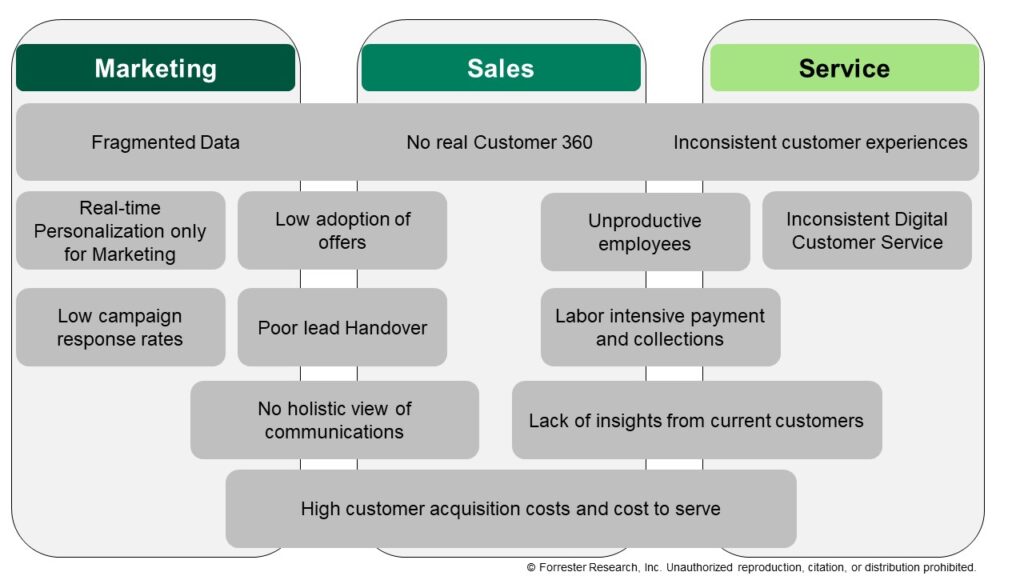- Lead to cash
- Source to pay
- Customer service request management requiring a truck roll
- Asset warranty and subscription management
What do all the above processes have in common?
Two things: (1) They are processes that span organizational silos within an enterprise, where work must be intelligently orchestrated across operations for the desired business outcome and (2) Few enterprises can provide frictionless engagement.
What would it mean if leveraging industry solutions, automation, and AI transformed these processes to become a more intelligent part of your business practices?
As organizations rush toward an intelligent enterprise, they are faced with a few sins of the past. Business functions hoard and accumulate highly customized data, making it expensive and time-consuming to create an enterprisewide view; business leaders make suboptimal decisions reflective of organizational performance goals with less consideration of the enterprise strategy; and software buyers invest in the product features that meet departmental requirements but lack the capabilities required to integrate, or hand off business workflows to, adjacent business functions. These sharing and integration headaches, decision-making traps, and workflow disruptions impede enterprises from adopting broad AI and automation strategies.
Fractured experiences in the front office result from unintegrated business applications.
Start Taking Proactive Steps To Do Better
Doing better is crucial for your business. Consider enterprise business applications that can mitigate these challenges and fast-path your intelligent enterprise tech strategy:
- Define outcomes and align stakeholders across the enterprise who impact outcomes. Delivering aligned outcomes has a positive effect on customer experience, risk, cost and revenue. Yet no single organization is often responsible for these outcomes. Start by defining outcomes, as well as metrics that measure outcomes, and evangelize a shared vocabulary of metrics across the enterprise.
- Define workflows to support outcomes. These workflows — specific for each industry — will span front- and back-office applications such as billing, sales, service, and marketing. Reimagine experiences to reduce friction, digitize core processes, and connect the dots across organizational silos. Also, embed AI into workflows to allow them to adapt based on new signals — such as real-time econometric data.
- Rationalize technology to deliver outcomes. This is one of CIOs’ top priorities, as their firms face greater cost-optimization pressures and the extent and effectiveness of results vary. Audit your technology ecosystem to see whether you can standardize on a smaller set of vendor product suites or retire point solutions to corral tech sprawl. Adopt a cloud-native, platform-first, API-first approach to build a composable suite of applications that allows for business agility. Forrester offers an outcome-based technology optimization model that creates a well-structured approach offering advantages to delivering business-aligned value and enabling future growth.
- Explore industry-first business applications that support connected workflows. Vendors offer robust industry clouds that codify customer- and employee-facing workflows and that offer data models, industry-specific AI and insights, and packaged connectors to core industry platforms. They provide consistent user experiences that surface customer, product, and order data across the enterprise, and they also offer open architectures that let enterprises consume innovation at their own pace.
Let’s Connect
If your organization prioritizes implementing enterprise software to its fullest potential — which means taking advantage of business automation and AI in some capacity — Forrester can help. Request time with Kate Leggett on front-office customer relationship management strategies. If your organization has experience to share on this topic, feel free to submit a briefing request with Linda Ivy-Rosser.




